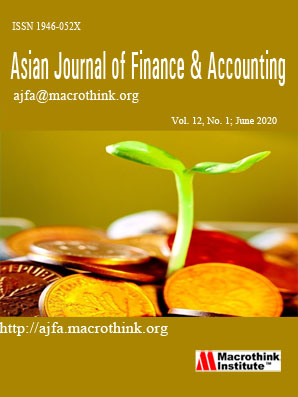The Relationship between Liquidity and Firms’ Profitability: A Case Study of Karachi Stock Exchange
Abstract
The purpose of this paper is to investigate the relationship between firm’s liquidity and profitability; and to find out the effects of different components of liquidity on firms’ profitability.The relationship between liquidity and firms’ profitability is empirically examined by collecting the data of 50 listed firms of Karachi Stock Exchange, Pakistan. Panel data has been collected from secondary sources for the year 2007 to 2011 .Net operating income and Return on assets are used measure of firm’s profitability. Liquidity of the firm is measured by using cash gap in days and current ratio. Firm size measured by net sales, total assets and market capitalization .The study applies regression analysis to determine factors affecting profitability. Incremental tests are carried out to see the importance of individual variables in the model.The results of correlation and regression analysis showed that there is a significant negative relationship between cash gap and return on assets while current ratio has significant positive relationship with profitability. Results further indicate that log of sales and log of total assets has positive significant relationship with profitability. The findings of this study are based on firms listed on the Karachi Stock Exchange (KSE). Hence, the results cannot be generalizable to those firms which are not listed on Karachi stock exchange. The sample of the study comprises only the merchandising and manufacturing firms. Banks are excluded due to their nature of work.
Submission of an article implies that the work described has not been published previously (except in the form of an abstract or as part of a published lecture or academic thesis), that it is not under consideration for publication elsewhere, that its publication is approved by all authors and tacitly or explicitly by the responsible authorities where the work was carried out, and that, if accepted, will not be published elsewhere in the same form, in English or in any other language, without the written consent of the Publisher. The Editors reserve the right to edit or otherwise alter all contributions, but authors will receive proofs for approval before publication.
Copyrights for articles published in MTI journals are retained by the authors, with first publication rights granted to the journal. The journal/publisher is not responsible for subsequent uses of the work. It is the author's responsibility to bring an infringement action if so desired by the author.








